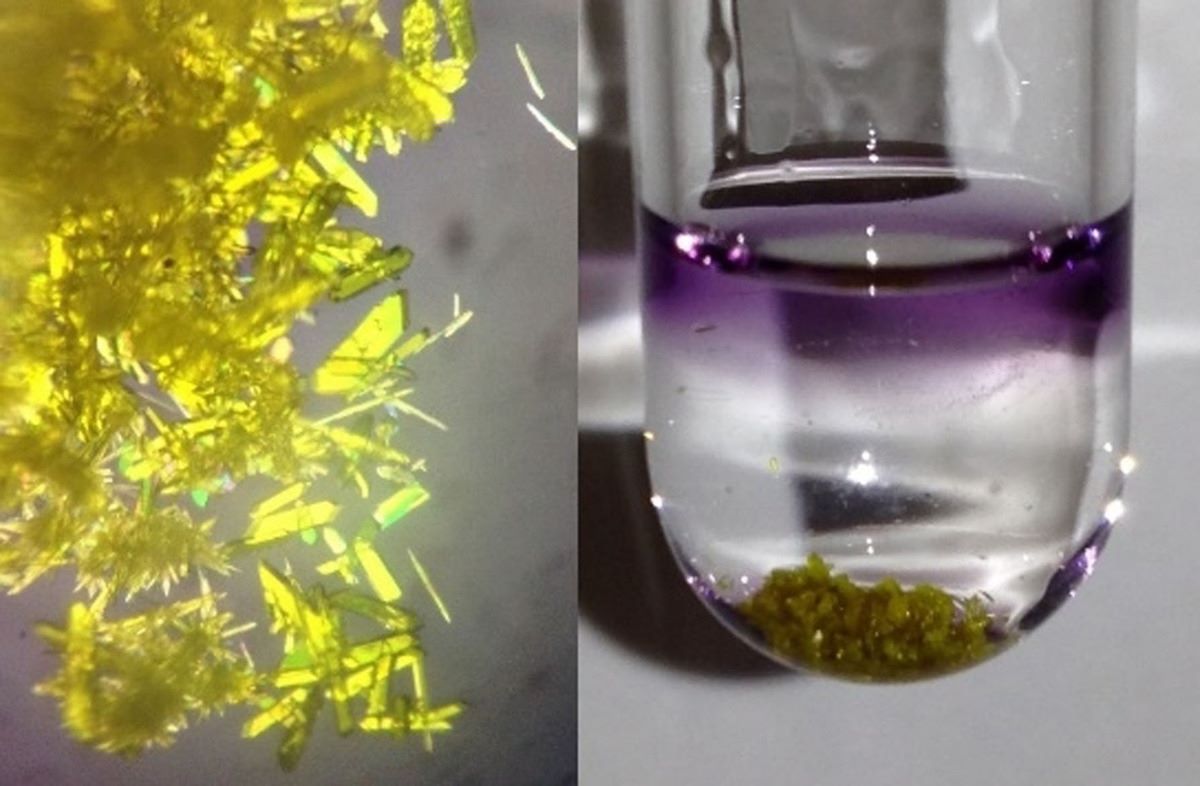
Ammonium pertechnetate might sound like a mouthful, but it's a fascinating compound with a lot to offer. This chemical, often abbreviated as NH4TcO4, is a salt of pertechnetic acid. What makes ammonium pertechnetate unique? It's one of the few compounds containing technetium, a rare and radioactive element. Technetium itself holds the title of being the first element to be artificially produced. Why should you care about ammonium pertechnetate? It's used in various scientific fields, from medical imaging to industrial applications. Understanding this compound can shed light on the broader uses of technetium and its role in modern science. Ready to dive into some intriguing facts about ammonium pertechnetate? Let's get started!
Key Takeaways:
- Ammonium pertechnetate, a compound with technetium, is crucial in medical imaging and has environmental concerns due to its radioactive nature. Safety measures are essential when handling this compound.
- The history of ammonium pertechnetate is intertwined with the discovery of technetium, and ongoing research offers promising future applications in advanced medical imaging.
What is Ammonium Pertechnetate?
Ammonium pertechnetate is a chemical compound with the formula NH4TcO4. It contains technetium, an element often used in nuclear medicine. Here are some fascinating facts about this unique compound.
-
Ammonium pertechnetate is a salt formed by the combination of ammonium ions and pertechnetate ions.
-
The compound is highly soluble in water, making it useful in various chemical processes.
-
Technetium, the central element in ammonium pertechnetate, was the first artificially produced element.
-
Technetium-99m, a derivative of technetium, is widely used in medical imaging.
Properties of Ammonium Pertechnetate
Understanding the properties of ammonium pertechnetate helps in grasping its applications and behavior in different environments.
-
It appears as a white crystalline solid under normal conditions.
-
The compound is stable at room temperature but decomposes upon heating.
-
Ammonium pertechnetate is non-flammable, adding to its safety profile in laboratory settings.
-
It has a molar mass of approximately 181.95 g/mol.
Uses in Medicine
Ammonium pertechnetate plays a significant role in the medical field, particularly in diagnostics.
-
It is used to prepare technetium-99m generators, essential for medical imaging.
-
Technetium-99m is used in over 20 million diagnostic procedures annually.
-
The compound helps in imaging organs such as the heart, lungs, and brain.
-
It aids in detecting bone metastases and other abnormalities.
Environmental Impact
The environmental impact of ammonium pertechnetate is a subject of study due to its radioactive nature.
-
Technetium-99, a byproduct, has a half-life of about 211,000 years.
-
The compound can contaminate water sources if not properly managed.
-
Research is ongoing to find ways to safely dispose of or recycle technetium waste.
-
Ammonium pertechnetate's environmental footprint is a concern in nuclear waste management.
Safety and Handling
Proper safety measures are crucial when handling ammonium pertechnetate due to its radioactive properties.
-
It should be handled in a well-ventilated area to avoid inhalation.
-
Protective clothing and gloves are recommended when working with the compound.
-
In case of a spill, it should be cleaned up immediately using appropriate materials.
-
Long-term exposure to technetium can pose health risks, including cancer.
Chemical Reactions
Ammonium pertechnetate participates in various chemical reactions, showcasing its versatility.
-
It can act as an oxidizing agent in chemical reactions.
-
The compound reacts with reducing agents to form technetium dioxide.
-
It can be used to synthesize other technetium compounds.
-
Ammonium pertechnetate is involved in redox reactions in analytical chemistry.
Historical Context
The history of ammonium pertechnetate is intertwined with the discovery and development of technetium.
-
Technetium was discovered in 1937 by Carlo Perrier and Emilio Segrè.
-
The production of ammonium pertechnetate followed shortly after the discovery of technetium.
-
Its development marked a significant milestone in the field of nuclear chemistry.
-
The compound's use in medicine began in the mid-20th century.
Future Prospects
The future of ammonium pertechnetate looks promising with ongoing research and potential new applications.
-
Scientists are exploring its use in advanced medical imaging techniques.
-
Research is being conducted to improve the efficiency of technetium-99m generators.
Final Thoughts on Ammonium Pertechnetate
Ammonium pertechnetate, a compound with a fascinating history and unique properties, plays a crucial role in various scientific fields. Its radioactive nature makes it invaluable in medical imaging, particularly in nuclear medicine. This compound's ability to form stable complexes with different elements opens doors to numerous applications, from industrial processes to environmental studies.
Understanding ammonium pertechnetate's behavior and uses helps scientists develop better diagnostic tools and treatments. Its contribution to advancing technology and medicine can't be overstated. As research continues, new discoveries about this compound will likely emerge, further expanding its potential.
In essence, ammonium pertechnetate stands as a testament to the wonders of chemistry and its impact on our world. Whether you're a student, a scientist, or just curious, knowing these facts enriches your appreciation for the intricate dance of elements that shape our lives.
Frequently Asked Questions
Was this page helpful?
Our commitment to delivering trustworthy and engaging content is at the heart of what we do. Each fact on our site is contributed by real users like you, bringing a wealth of diverse insights and information. To ensure the highest standards of accuracy and reliability, our dedicated editors meticulously review each submission. This process guarantees that the facts we share are not only fascinating but also credible. Trust in our commitment to quality and authenticity as you explore and learn with us.
